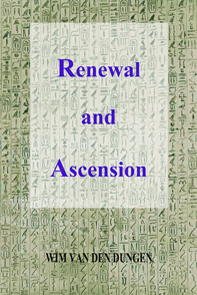 Ka-statue of
Auibre Hor
XIIIth Dynasty
|
The
"ka" ("kA") had two connotative layers :
-
collective
: vital energy, power of life, vitality, source of rejuvenation
and restoration of health ;
-
individual
: subtle "double", vehicle of personal characteristics and
traits, linked with life, prosperity & health.
The
"act of ka" was represented as two arms extended upwards
from a base, supposed to be the breast muscles. Although the hands are
extended as in adoration, in fact, an embrace is meant. To put one's arms
around another, was to impart one's vital essence to that person.
The
transmission of life power or vital energy is therefore linked with the
"ka". This was the general meaning of the concept, applicable to all situations
of life. The underlying idea being the sharing of this vital energy with
others, be they humans or gods.
The giving of favours, good fortune in the
world and health were all related to this vital energy.
On an individual level, every human being had a "double", which
co-determined the fortunate aspects of a person's fate. This double
contained the dispositions which influenced one's emotional life as well.
Hence, the Egyptian Ka encompasses both the yogi's "sheet of
breath" ("etheric double") as well as the "sheet of
passions" or "astral" body", influenced by the planets
("astra").
The Ka is linked with quickening and revitalization.
So when the offerings to the Ka of the deceased ended, the latter's
soul
("bA")
was no longer gratified. The restoration of oneness through rituals of
rejuvenation were intimately linked with the doubles of Pharaoh and the
deities.
The Ka was also the subtle, vital energy present in offerings.
|

